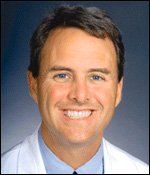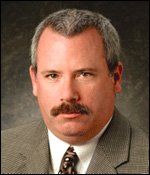ASCO 2011: The Challenges of Running an Oncology Practice in 2011
The picture in 2011 for the community oncologist is dire. Over the past several years many community practices have been acquired by hospitals out of duress. Drug delivery has started to change as treatments are evolving, moving away from the high-margin infusion business.
Community Oncology is in Peril

Jeffrey Patton, MD
Tennesee Oncology
The picture in 2011 for the community oncologist is dire. Over the past number of years, clinics have closed, are struggling financially, have merged, or been acquired by hospitals. This follows a general trend in medicine where there are now fewer phyisican-owned practices than those owned by hospitals. Reimbursements are also down-since 2004, medicare gross drug margins have deceased over 70%.
“We’re at a reflection point where if we don’t adapt and conform, we’re not going to exist,” said Jeffrey Patton, CEO, Tennessee Oncology, speaking Saturday during the annual meeting of the American Society of Clinical Oncology (ASCO). Patton was a speaker at the education session, “Running an Oncology Practice in 2011: Finance, Resourcing, and Ancillary Opportunities.”
New Sources of Revenue
Practices need to diversify their revenue streams and entertain multiple lower-margin lines of business in order to stay profitable. Imaging, for example, remains a high-margin business, but when considering "mature lines of business like a CT scanner,” said Patton, “you may have to predict a reduced amount of use.”
Drug delivery has started to change as treatments are evolving, moving away from the high-margin infusion business. “Retail pharmacy is actually a new opportunity,” according to Patton, as “40% of the products in the pipelines are oral.”
There is always the risk of encroaching upon a current revenue stream. “You have to make sure you don’t cannibalize another part of your business,” said Patton, pointing out that if CT cranial scanning is already a part of your practice, adding an MRI scanner might not produce any new income.
Patton suggested creating a pro forma statement to determine the 2–5 year projection of any potential investment to predict “future financial returns,” and talk to colleagues to determine what volume to expect. “You really have to look at the scale of your practice to see if these are anything you can do”-and if a decision on a new line of business is made-“you need to fully commit . . . if you’re gonna do it, you need to do it.”
Addressing Patient Needs

John Emmett Hennessy, CMPE
Kansas City Cancer Center
In running a successful practice, it is important to think of a clinic's offerings in terms of patient needs. “We’re gonna think a little about the product as we see it, and as the patient sees it,” said John Emmett Hennessy, executive director at the Kansas City Cancer Center. He spoke at the same education session and delivered the presentation, “How Do You Manage the Resources in Your Office and How Does Technology Enable Efficient Formulary Management and Related Reimbursement Issues?”
As an example of this, Hennessy spoke briefly about side effects during a patient's treatment. “Just because we see it commonly, doesn’t mean it’s common to the patient.”
The way Hennessy approaches patient needs is by examining what the patient is actually there for. Often there is a disconnect. A patient may not fully understand their diagnosis, the treatment requirements involved, or the severity of their disease. Often, “if you look at our records you would assume the patient wants or needs a full dose of chemotherapy,” said Hennessy. “My guess is they come to our office because they want to feel better.”
The patient also comes to the office to see the doctor, said Hennessy, not to spend time talking to the receptionist or reading magazines in a waiting room, and the more efficiently their needs are met the better the practice is being run.
“If you have a waiting room,” said Hennessy, “you have a problem. “If you told your patients, I could spend a million dollars on the waiting room or a million dollars to make sure you don’t wait, they would choose the latter every time.” The time a patient spends before meeting with their doctor should not be spent waiting but rather in a way that meets their needs.